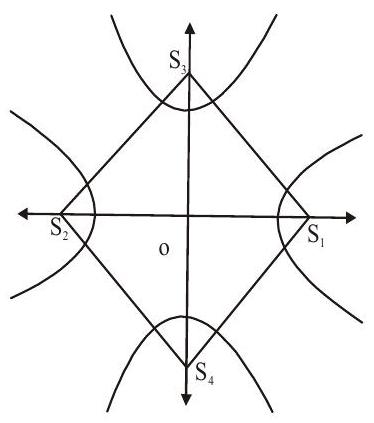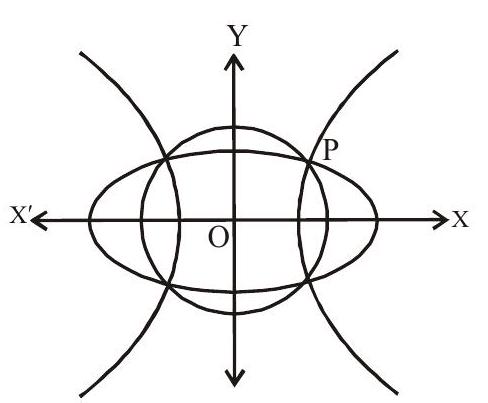HYPERBOLA- 8 (Practice Problems)
Practice problems
1. Equation of conjugate axis of hyperbola
(a)
(b)
(c)
(d) None of these
Show Answer
Solution:
Equation of asymptotes are
Hence their slopes are

Answer: (a)
2. If
(a) 156
(b) 36
(c) 26
(d) None of these
Show Answer
Solution :

So required area
Now e
Hence area
Answer: (c)
3. The ellipse
(a)
(c)
(b)
(d)
Show Answer
Solution:
Since ellipse and hyperbola intersect orthogonally, they are confocal.
foci of ellipse
Let point of intersection in the first quadrant be
Adding these two, we get
Equation of circle is

4. If
(a)
(b)
(c)
(d) None of these
Show Answer
Solution:
we know
Answer: (a)
5. From a point
(a)
(b)
(c)
(d) None of these
Show Answer
Solution:
Equation of asymptotes are

Answer: (b)
6. If a variable line has its intercepts on the coordinate axes
(a)
(b)
(c)
(d) Can not be decided
Show Answer
Solution:
Now
Line passing through the points
It is a tangent to the circle
Answer: (c)
7. If angle between asymptotes of hyperbola
(a)
(b)
(c)
(d)
Show Answer
Solution:
Required locus is director circle i.e.
If
Then equation of director circle is
Answer: (a)
8. The equation of the transverse axis of the hyperbola
(a)
(b)
(c)
(d)
Show Answer
Solution:
Directrix is
Equation of transverse axis is
Answer: (c)
Practice questions
1. The equation of common tangents to the parabola
(a)
(b)
(c)
(d)
Show Answer
Answer: (c)2. A tangent to the hyperbola
(a)
(b)
(c)
(d)
Show Answer
Answer: (b)3. The equation of the common tangent to the curves
(a)
(b)
(c)
(d)
Show Answer
Answer: (a)4. Let
(a)
(b)
(c)
(d) None of these
Show Answer
Answer: (c)5. The difference between the length
(a)
(b)
(c)
(d)
Show Answer
Answer: (d)6. The slopes of common tangents to the hyperbolas
(a)
(b)
(c)
(d) None of these
Show Answer
Answer: (c)7. The two conics
(a)
(b)
(c) b
(d)
Show Answer
Answer: (a)8. The point on the hyperbola
(a)
(b)
(c)
(d)
Show Answer
Answer: (d)9. If
(a)
(b)
(c)
(d) None of these
Show Answer
Answer: (b)10. If the latus rectum of a hyperbola through one focus subtends
(a)
(b)
(c)
(d)










